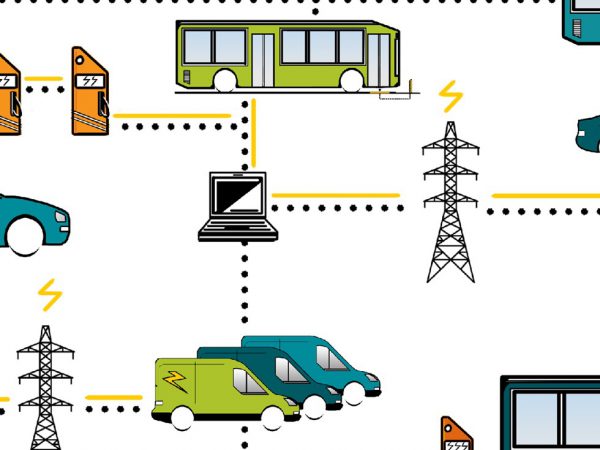Smart grid technology provides the means to match up supply and demand at a local level. A critical part of a smart grid is to have forms of flexibility in the energy system. The millions of Electric Vehicles (EVs) predicted over the next few years offer flexible demand that could be optimised in order to deliver the smarter outcomes for electricity network operators and consumers.
Regen predicts that in a high growth scenario in the UK, by 2035 85% of new car sales would be battery EVs and a further 10% plug-in hybrids. In Europe, around 50% of new car sales could be EVs by 2035. These new vehicles will increasingly be battery only EVs (rather than hybrid), which will have a larger impact on the electricity networks – creating an estimated 5 GW of peak demand (10.3% of current peak demand) by 2040 in the UK.
Using ‘smart’ chargepoints able to transmit and receive data and respond to external signals to control levels of charging, will be crucial to managing the impact on the electricity network. EV charging will mainly be at home or in the workplace, spreading this further to other locations and different times of day will help manage the impact on the network. We have identified a range of chargepoint management types which provide varying levels of flexibility (below).
Types of chargepoint management
Overall a mix of these strategies will be employed depending on the local network conditions and consumer requirements. An overarching management of chargepoints by electricity network operators (DSOs), will make sure circuits are within their limits and help keep the lights on. This will be done by creating local flexibility markets to manage demand on the network, or through direct intervention with charging, with a controller device on the chargepoint and at the local substation in the short term, and perhaps through the smart meter communication infrastructure in the long term.
Managed charging on a street with varying levels of constraint on chargepoints
Using bi-directional chargepoints, Vehicle to Grid (V2G) enabled EVs could provide services to the electricity network including price arbitrage, demand side response, local constraint avoidance, and frequency response services. Regen is involved in a trial of V2G on the Isle of Lewis in Scotland, as part of 20 other projects which received a total of £30 million funding from government to look at the technology and commercial opportunities.
Far from being a risk to electricity network security, with the right smart chargers and optimisation, EVs can provide new energy services and opportunities for consumers to benefit from. Third party aggregators and electricity suppliers are already looking to EVs as an important source of flexibility within a smart grid. Regen will be keeping a close eye on this market as it evolves over the coming months and years.
This blog has been supported by SET-UP.




